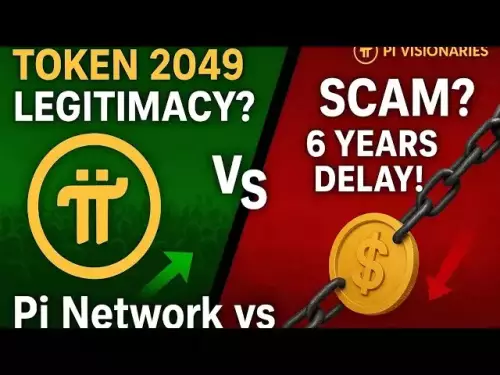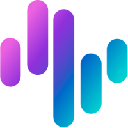-
 bitcoin
bitcoin $114779.865156 USD
2.30% -
 ethereum
ethereum $4226.519789 USD
2.39% -
 tether
tether $1.000545 USD
0.04% -
 xrp
xrp $2.890223 USD
0.92% -
 bnb
bnb $1030.029301 USD
2.95% -
 solana
solana $212.824944 USD
1.69% -
 usd-coin
usd-coin $0.999757 USD
0.01% -
 dogecoin
dogecoin $0.234961 USD
-0.27% -
 tron
tron $0.337174 USD
0.42% -
 cardano
cardano $0.804783 USD
0.09% -
 hyperliquid
hyperliquid $45.748770 USD
-2.85% -
 chainlink
chainlink $21.699170 USD
0.82% -
 ethena-usde
ethena-usde $1.001452 USD
0.08% -
 avalanche
avalanche $30.237800 USD
1.14% -
 stellar
stellar $0.372604 USD
1.52%
How to open a contract on Crypto.com? How to set margin and leverage?
To trade futures on Crypto.com, log in, go to 'Trade' > 'Futures', choose an asset, set contract size, select 'Buy' or 'Sell', and adjust margin and leverage as needed.
May 04, 2025 at 02:00 am
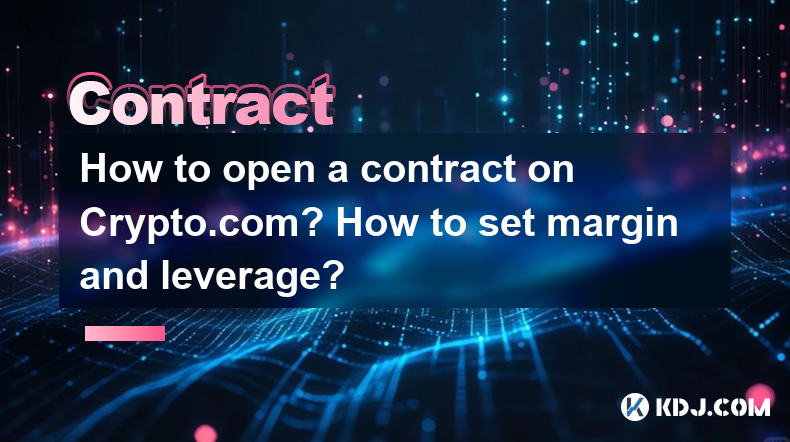
Opening a contract on Crypto.com and setting the appropriate margin and leverage are essential steps for engaging in futures trading on this platform. This guide will walk you through the process in detail, ensuring you understand each step thoroughly.
Accessing the Futures Trading Section
To start, you need to access the futures trading section on Crypto.com. Here's how you can do it:
- Log in to your Crypto.com account.
- Navigate to the 'Trade' section on the main menu.
- Select 'Futures' from the sub-menu. This will take you to the futures trading platform where you can open contracts.
Opening a Contract
Once you are in the futures trading section, you can proceed to open a contract. Here's a detailed guide on how to do that:
- Choose the Asset: On the futures trading page, you will see a list of available assets. Select the asset you wish to trade, such as Bitcoin (BTC) or Ethereum (ETH).
- Select Contract Type: Crypto.com offers different types of contracts, such as perpetual contracts. Choose the type that suits your trading strategy.
- Set Contract Size: Decide on the size of the contract you want to open. This is usually measured in the base currency of the asset you are trading.
- Click 'Buy' or 'Sell': Depending on your market prediction, click on the 'Buy' button to go long or the 'Sell' button to go short.
Setting Margin
Margin is the amount of capital you need to open and maintain a futures position. Here's how to set the margin on Crypto.com:
- Navigate to the Position Tab: After opening a contract, go to the 'Position' tab where you can view all your open positions.
- Adjust Margin: Click on the specific position you want to adjust. You will see an option to add or reduce margin. Enter the amount you wish to adjust and confirm the change.
Setting Leverage
Leverage allows you to control a larger position with a smaller amount of capital. Here's how you can set the leverage on Crypto.com:
- Select Leverage: Before opening a new contract, you will see an option to set the leverage. Crypto.com offers various leverage options, typically ranging from 1x to 100x.
- Choose Your Leverage: Based on your risk tolerance and trading strategy, select the desired leverage. Remember that higher leverage increases both potential profits and potential losses.
- Confirm the Leverage: After selecting your leverage, confirm it before proceeding to open the contract.
Managing Your Positions
Once your contract is open, it's important to manage your positions effectively. Here's how you can do that:
- Monitor Your Positions: Regularly check the 'Position' tab to monitor the performance of your open contracts.
- Adjust Margin and Leverage: As market conditions change, you may need to adjust your margin and leverage. Use the steps outlined above to make these adjustments.
- Close Positions: When you are ready to close a position, go to the 'Position' tab, select the position you want to close, and click on 'Close'.
Understanding Risks and Rewards
It's crucial to understand the risks and rewards associated with futures trading on Crypto.com. Here are some key points to consider:
- Volatility: Cryptocurrency markets are highly volatile, which can lead to significant gains or losses.
- Liquidation: If the market moves against your position and your margin falls below the maintenance level, your position may be liquidated.
- Profit and Loss: The potential for profit is high due to leverage, but so is the potential for loss. Always trade with caution and within your risk tolerance.
Frequently Asked Questions
Q: Can I change the leverage on an existing position on Crypto.com?A: No, once a position is opened, you cannot change the leverage on Crypto.com. You would need to close the existing position and open a new one with the desired leverage.
Q: What is the difference between isolated and cross margin on Crypto.com?A: Isolated margin means that the margin for a position is isolated to that specific position, limiting the risk to the amount of margin allocated. Cross margin, on the other hand, uses your entire account balance as margin, which can help prevent liquidation but also increases the risk to your entire account.
Q: How do I calculate the margin required for a position on Crypto.com?A: The margin required for a position can be calculated using the formula: Margin = (Position Size x Entry Price) / Leverage. For example, if you want to open a $10,000 position on Bitcoin at $50,000 with 10x leverage, the margin required would be ($10,000 x $50,000) / 10 = $50,000,000 / 10 = $5,000.
Q: What happens if my position gets liquidated on Crypto.com?A: If your position gets liquidated, Crypto.com will automatically close your position at the market price to prevent further losses. Any remaining margin in your account after liquidation will be returned to you, but you will lose the amount used to cover the losses incurred by the position.
Disclaimer:info@kdj.com
The information provided is not trading advice. kdj.com does not assume any responsibility for any investments made based on the information provided in this article. Cryptocurrencies are highly volatile and it is highly recommended that you invest with caution after thorough research!
If you believe that the content used on this website infringes your copyright, please contact us immediately (info@kdj.com) and we will delete it promptly.
- Altcoins Primed for 100x Gains: Cryptocurrencies to Watch
- 2025-09-30 22:45:16
- Pi Network, OKX, and Withdrawal Woes: What's Going On?
- 2025-09-30 23:05:12
- Debut Auction & XRP ETF Watch: October 18th Auction Set, Crypto's Big Day?
- 2025-09-30 22:45:16
- Allbridge, Algorand, and Stablecoins: Bridging the Gap in DeFi
- 2025-09-30 23:05:12
- Navigating Solana Wallets: Your Guide to Secure Crypto in 2025
- 2025-09-30 22:50:11
- Shiba Inu's Uptober Rally: Will Exchange Supply Fuel the Fire?
- 2025-09-30 23:10:17
Related knowledge
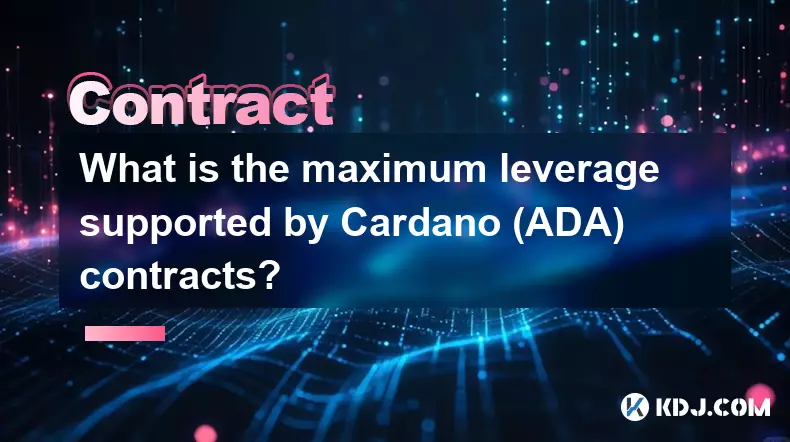
What is the maximum leverage supported by Cardano (ADA) contracts?
Sep 30,2025 at 03:37am
Understanding Leverage in ADA Derivatives Trading1. Leverage in cryptocurrency futures and perpetual contracts allows traders to control larger positi...
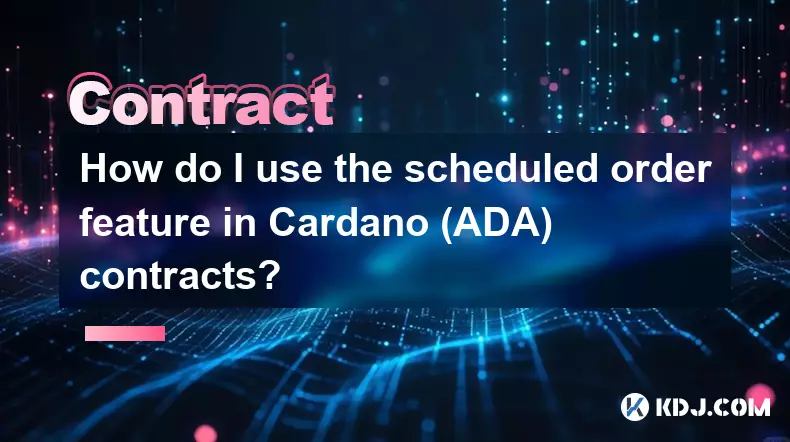
How do I use the scheduled order feature in Cardano (ADA) contracts?
Sep 28,2025 at 10:18pm
Understanding Scheduled Orders in Cardano Smart ContractsCardano operates on a proof-of-stakes consensus mechanism and uses the Plutus scripting langu...

Can I modify the leverage of Cardano (ADA) contracts after opening a position?
Sep 30,2025 at 08:19am
Understanding Leverage in Cardano (ADA) Futures Trading1. Leverage allows traders to control larger positions using a smaller amount of capital. In th...
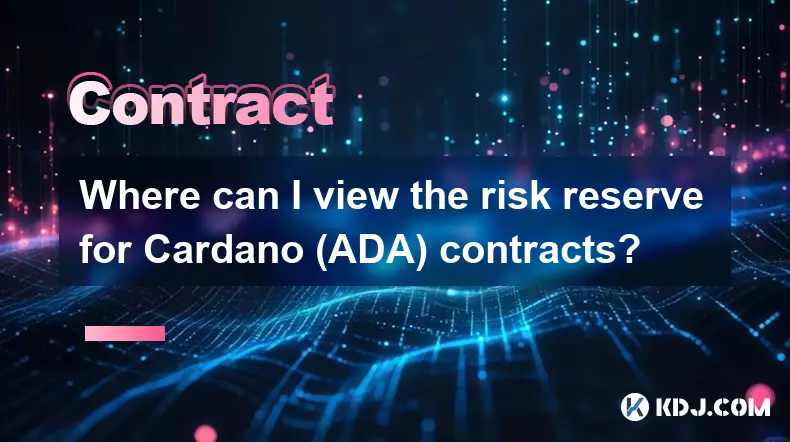
Where can I view the risk reserve for Cardano (ADA) contracts?
Sep 29,2025 at 09:19pm
Risk Reserve Overview in Cardano (ADA) Ecosystem1. The concept of a risk reserve within the Cardano blockchain does not align with traditional central...

How do I enable the "scalping-only" mode for Cardano (ADA) contracts?
Sep 24,2025 at 03:19am
Understanding Scalping Strategies in Crypto Derivatives1. Scalping in cryptocurrency trading refers to executing multiple short-term trades within min...
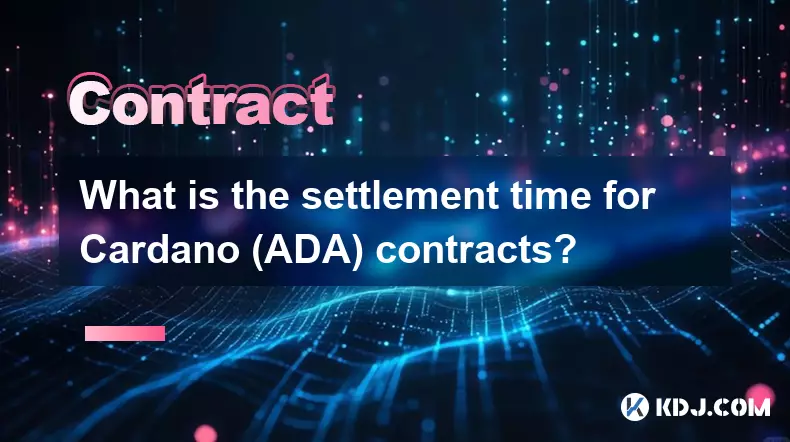
What is the settlement time for Cardano (ADA) contracts?
Sep 28,2025 at 04:18am
Understanding Cardano's Contract Settlement Mechanism1. Cardano operates on a proof-of-stake consensus model known as Ouroboros, which fundamentally i...

What is the maximum leverage supported by Cardano (ADA) contracts?
Sep 30,2025 at 03:37am
Understanding Leverage in ADA Derivatives Trading1. Leverage in cryptocurrency futures and perpetual contracts allows traders to control larger positi...

How do I use the scheduled order feature in Cardano (ADA) contracts?
Sep 28,2025 at 10:18pm
Understanding Scheduled Orders in Cardano Smart ContractsCardano operates on a proof-of-stakes consensus mechanism and uses the Plutus scripting langu...

Can I modify the leverage of Cardano (ADA) contracts after opening a position?
Sep 30,2025 at 08:19am
Understanding Leverage in Cardano (ADA) Futures Trading1. Leverage allows traders to control larger positions using a smaller amount of capital. In th...

Where can I view the risk reserve for Cardano (ADA) contracts?
Sep 29,2025 at 09:19pm
Risk Reserve Overview in Cardano (ADA) Ecosystem1. The concept of a risk reserve within the Cardano blockchain does not align with traditional central...

How do I enable the "scalping-only" mode for Cardano (ADA) contracts?
Sep 24,2025 at 03:19am
Understanding Scalping Strategies in Crypto Derivatives1. Scalping in cryptocurrency trading refers to executing multiple short-term trades within min...

What is the settlement time for Cardano (ADA) contracts?
Sep 28,2025 at 04:18am
Understanding Cardano's Contract Settlement Mechanism1. Cardano operates on a proof-of-stake consensus model known as Ouroboros, which fundamentally i...
See all articles





















